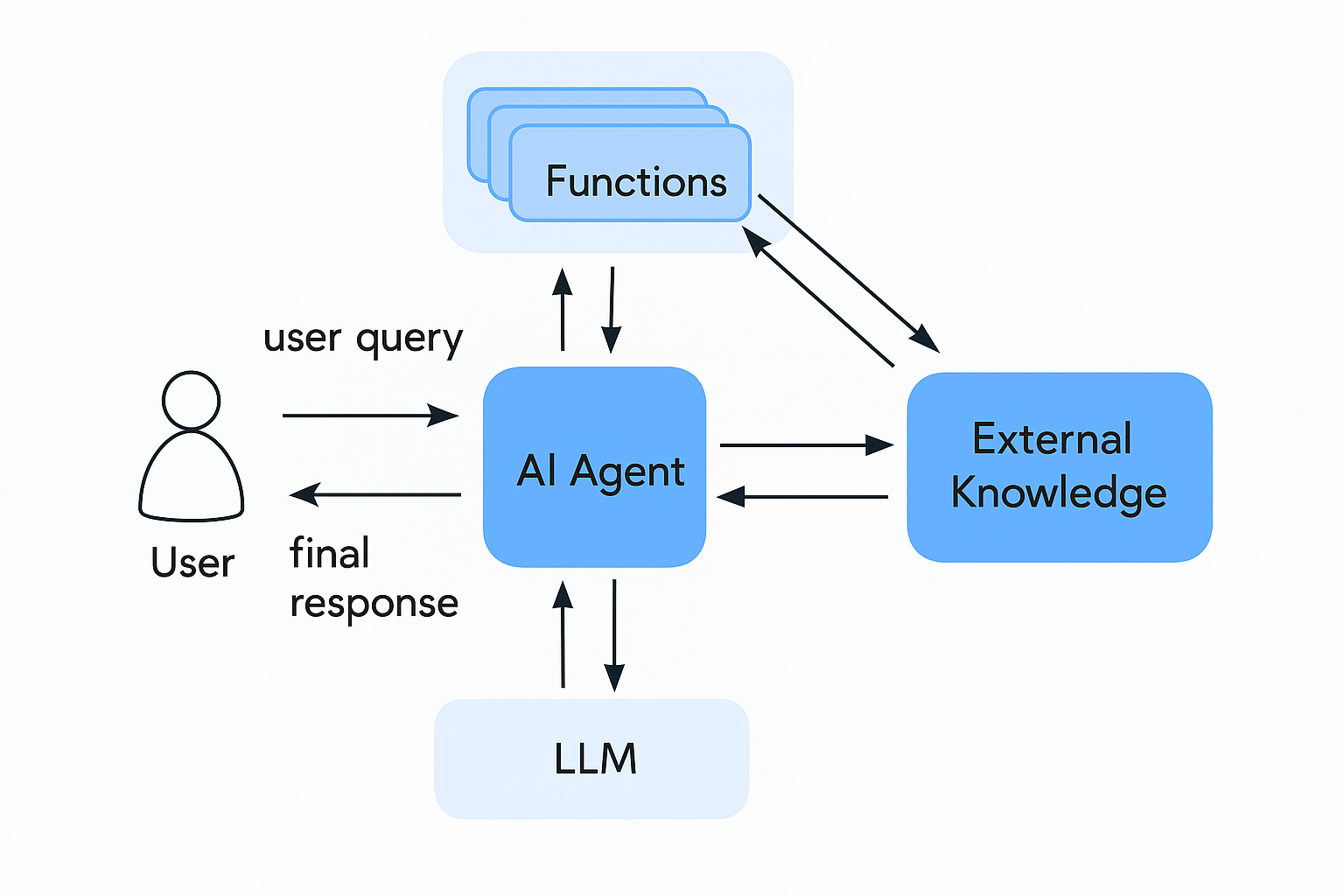
Ever heard of RAG (Retrieval-Augmented Generation) and wondered what the heck it means for customer support? 🤔
Don't worry—you're not alone! RAG is one of the most powerful AI technologies transforming customer service today, but it's often misunderstood or overcomplicated.
In this complete guide, we'll explain what RAG is, how it works, why it's a game-changer for customer support, and how you can leverage it to deliver faster, more accurate answers to your customers. Let's dive in! 🚀
RAG stands for Retrieval-Augmented Generation. It's a hybrid AI framework that combines:
In simple terms:
Instead of an AI making up answers based on its training data (which can be outdated or wrong), RAG first retrieves the right information from your company's knowledge base, then generates a response using that specific, accurate data.
It's like having a super-smart assistant who always checks your company docs before answering a customer question.
Large Language Models like GPT-4, Claude, or Mistral are incredibly powerful. But they have limitations for customer support:
LLMs can confidently generate answers that sound right but are completely wrong. This is called "hallucination."
Example: A customer asks about your return policy. The LLM makes up a "14-day return window" when your actual policy is 30 days.
Result? Frustrated customer, angry escalation, damage to brand trust.
LLMs are trained on data up to a certain cutoff date. They don't know about:
Generic LLMs don't know your business's unique:
The solution? RAG.
By combining retrieval (pulling from your real knowledge base) with generation (crafting natural responses), RAG delivers accurate, up-to-date, company-specific answers.
Let's break down the RAG process:
"What's your refund policy for international orders?"
The system converts the question into a format optimized for searching your knowledge base.
The system searches your knowledge base (articles, past conversations, internal docs) and retrieves the most relevant information chunks.
For example:
The retrieved information is fed into the LLM as context:
"Here's the relevant information from the knowledge base: [policy details]. Now answer the customer's question based on this."
The LLM generates a natural, accurate response using the retrieved information:
"For international orders, we offer a 30-day refund policy. You can initiate the return through your account dashboard. Return shipping costs are covered for orders over $100. Would you like me to guide you through the process?"
The response is verified for accuracy and delivered to the customer—either directly (via chatbot) or as a suggestion to your agent (copilot mode).
The result? Accurate, contextual, brand-aligned answers every single time.
ApproachProsConsTraditional ChatbotSimple, rule-basedRigid, can't handle variations, poor UXFine-tuned LLMCustomized to your dataExpensive, time-consuming, still can hallucinateRAGAccurate, up-to-date, cost-effective, fast to deployRequires quality knowledge base
Why RAG wins:
At Klark, we use RAG to power our AI agents, combining the best LLMs with your company's knowledge for unmatched accuracy.
By grounding responses in your actual knowledge base, RAG minimizes the risk of AI making stuff up.
Result: Trustworthy, reliable answers your customers can count on.
Update your knowledge base, and RAG instantly uses the new information. No retraining required.
Example: Launch a new product? Add it to your knowledge base, and RAG immediately knows about it.
RAG retrieves the exact information needed, then generates a precise answer.
Result: Higher first-contact resolution rates, happier customers.
No need for expensive fine-tuning or model retraining. Just plug your knowledge base into a RAG system and go.
ROI: Significantly faster and cheaper than traditional AI approaches.
Use the same RAG system for:
Agents get instant, accurate suggestions powered by RAG, cutting research time in half.
At Klark, our clients see 50% productivity gains thanks to RAG-powered copilot features.
Your RAG system is only as good as your knowledge base.
What to include:
Pro tip: At Klark, we automatically extract knowledge from your past support conversations. You don't need to write everything from scratch.
Outdated knowledge = inaccurate answers.
Set up processes to:
Good retrieval = good answers.
Best practices:
Not all LLMs are created equal. For customer support, you want:
At Klark, we use the best models on the market to ensure top-tier performance.
Even with RAG, verification is important:
Track these metrics:
For more on measuring success, check out our guide on measuring customer satisfaction.
Customer query: "Can I return an item I bought 3 weeks ago?"
RAG process:
Result: Instant, accurate answer with zero human intervention.
Customer query: "How do I integrate with Salesforce?"
RAG process:
Result: Customer self-serves successfully, no ticket created.
Agent receives: Complex billing question
Klark's RAG:
Result: Agent responds in 30 seconds instead of 5 minutes.
Solution: Start small. Begin with your top 20-30 most common questions. Expand from there.
At Klark, we help you organize and structure your knowledge automatically from existing conversations.
Solution: Improve your retrieval system:
Solution: Enrich your prompts with:
Solution: Use a plug-and-play solution like Klark.
We handle all the RAG complexity behind the scenes. You just connect your CRM, and we do the rest.
RAG is evolving fast. Here's what's coming:
Companies adopting RAG now will dominate customer support in the future.
At Klark, we've optimized RAG specifically for customer support:
We take care of all the technical complexity. You focus on your customers.
RAG (Retrieval-Augmented Generation) is transforming customer support by delivering accurate, contextual, up-to-date answers at scale.
Key takeaways:
Want to see RAG in action for your customer support? Request a Klark demo and discover how we can transform your support with RAG-powered AI.
Because the future of customer support isn't just AI—it's accurate AI. And that's what RAG delivers. 🚀
Klark is a generative AI platform that helps customer service agents respond faster and more accurately, without changing their tools or habits. Deployable in minutes, Klark is already used by over 50 brands and 2,000 agents.





